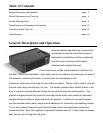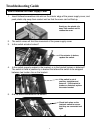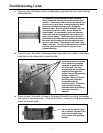
2
Important Safeguards
When using electrical appliances consideration should be given to basic safety
precautions including:
1. Read all instructions.
2. Do not immerse appliance, cord or plug in water or other liquid and take care to ensure
that the control panel is kept clean and dry.
3. Do not use the appliance if there is any visible damage to the appliance or to the supply
cord.
4. Close supervision is necessary when any appliance is used by or near children.
5. Do not let the cord hang over the edge of the table or worktop or touch hot surfaces.
6. Do not use the appliance outdoors.
7. Do not use the appliance for other than its intended use.
8.
WARNING: DO NOT USE THIS ELECTRONIC AIR CLEANER WHEN OXYGEN IS
BEING USED OR WHEN COMBUSTIBLE GASES ARE PRESENT. HIGH VOLTAGE
SPARKS CAN CAUSE IGNITION AND SUBSEQUENT PERSONAL INJURY OR
PROPERTY DAMAGE.
9.
NOTE: Care should be taken to avoid touching the sharp ionizer needle situated above
the fan. Always disconnect the unit from power prior to cleaning or servicing.
Tools Required
Multimeter Fluke Model 8024-B
High Voltage Probe Fluke Model 80K-40
#2 Flat Blade Screwdriver
#2 Phillips Drive Screwdriver
Diagonal Wire Cutters
Wire nuts
Needlenose Pliers
General Knowledge Warning - The intent of this manual is to provide general
guidance to be used by a qualified service technician in servicing the Oreck tabletop electrostatic
air cleaner. The technician should have a good understanding relative to working with electrical
and mechanical equipment. A knowledge base to include basic electronics, basics of motors and
general mechanical knowledge is required to service this equipment. Attempting to service the
equipment without the above background could result in electric shock, personal injury or
property damage. Do not attempt to service equipment unless properly qualified.
Rotating Element Warning - Unit has a rotating blower wheel and cooling fan to
circulate air and keep the unit cool. When servicing the unit and repairing the unit always insure
that you keep objects and internal electrical wiring away from the rotating elements. Failure to
allow for proper clearance for rotating members can cause electric shock, personal injury or
property damage.


















